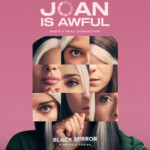On March 22, 2017, the Supreme Court passed down a decision in Star Athletica, LLC v. Varsity Brands, Inc., one that will have a major impact on the fashion industry. In order to understand this decision and its consequences (more copyright registrations, litigation, and innovation in fashion designs), it’s first necessary to explain copyright law. This may be a little complex for non-lawyers. Just keep in mind that one of the Supreme Court’s jobs is to interpret federal law, in this case a federal statute (the Copyright Act).
Copyright Law
Under section 102 of the Copyright Act, “original works of authorship fixed in any tangible medium of expression” can be protected under copyright law.
What does this mean? Below, find a breakdown in layman’s terms.
Work of Authorship
Legal definition: under the Act, works of authorship include “pictorial, graphical, and sculptural works.” Let’s call this PGS for ease. Section 101 of the Act defines PGS works to include “two-dimensional and three-dimensional works of fine, graphic, and applied art, photographs, prints and art reproductions[.]”
What this means: 2D artistic works (like pencils drawings, paintings, graphic drawings, and pictures) and 3D artistic works (like sculptures) are considered to be works of authorship that can be copyrighted.
Fixed in a Tangible Medium of Expression
Legal definition: a work of authorship is fixed in a tangible medium of expression when it’s embodied in a material object from which the work can be perceived, reproduced, or otherwise communicated.
What this means: so long as your creative work is contained in something that can be touched and seen, it can be copyrighted. A drawing on a piece of paper (which can be touched and seen) is fixed in a tangible medium of expression. So is a marble sculpture of a gargoyle.
Special Rule for PGS Works Embodied in a Useful Article
Legal rule: if a PGS work is incorporated in a useful article (which is defined as “an article having an intrinsic utilitarian function that is not merely to portray the appearance of the article or to convey information”), the Act will only protect the PGS work if the design of the PGS features “can be identified separately from, and are capable of existing independently of, the utilitarian aspects of the article.”
What this means: in an useful item, only the artistic features that can exist separately from the features that make it useful will be given copyright protection.
Example: look at the bicycle rack in this link. The waves that comprise this rack could be considered to be a sculptural work (the S in PGS). However, the waves are also the useful features of the rack because they hold bicycles. Thus, in this useful item (the bicycle rack), the design of the sculptural rack (the waves) cannot exist separately from the features that make it useful (these same waves hold bicycles). Thus, this bicycle rack cannot gain copyright protection.
That’s a pretty clear example. What about an unclear example? Continue to read on for the facts of this case.
Star Athletica, LLC v. Varsity Brands, Inc.
Varsity Brands (a designer and manufacturer of cheerleader uniforms) sued Star Athletica for infringing the copyrights in 5 of their designs. Varsity registered with the Copyright Office the copyright for these 2D designs, which appear on the surface of their uniforms. The designs were primarily composed of different combinations and arrangements of chevrons, which are lines or stripes in the shape of a V or an inverted V. Here’s are examples of what Varsity registered:


Lower Court Rulings – Why the Supreme Court Decided to Hear the Case
The District Court held that the designs had the useful function of identifying the outfits as cheerleader uniforms. Thus, under the Act, these designs couldn’t be “physically or conceptually” separated “from the utilitarian function” of the uniform.
The Court of Appeals (higher court) reversed the District Court’s decision holding that the “graphic designs” were “separately identifiable” because the designs “and a blank cheerleading uniform can appear ‘side by side’ – one as a graphic design, and one as a cheerleading uniform.” Also, it stated the designs were “capable of existing independently” because they could be incorporated onto the surface of different types or garment or hung on the wall and framed as art.
What does this mean? There is a disagreement in interpreting federal law and the Supreme Court (the highest court in the land) decided to settle this once and for all. The Supreme Court decided to hear this case in order to resolve disagreement in the lower courts over the proper test for implementing the Act’s separate-identification and independent-existence requirements.
Rule of the Supreme Court
Supreme Court’s holding: a feature incorporated into the design of a useful article is eligible for copyright protection only the feature (1) can be perceived as a 2D or 3D work of art separate from the useful article, and (2) would qualify as a protectable PGS work – either on its own or fixed in some other tangible medium of expression – if it were imagined separately from the useful article into which it is incorporated.
Another iteration of rule: a feature of the design of a useful article is eligible for copyright if, when identified and imagined apart from the useful article, it would qualify as a PGS work either on its own or when fixed in some other tangible medium.
Farewell physical separability: the PGS work no longer has to be capable of being physically separated from the item that renders it useful. So long as you can imagine the PGS work in another tangible medium, it can qualify for copyright protection.
Impact on the Fashion Industry
This decision will impact the fashion industry in several ways. First, there will be exponential growth in the amount of fashion designs registered with the Copyright Office. That floral print, which will ultimately be reproduced on a dress, can be recreated on a piece of paper, framed, and hung up. Thus, that company will try to protect its design under the copyright law and register it.
Second, there will be more litigation involving fashion companies. That pattern for Company A is substantially similar to the pattern of Company B, which registered the pattern with the Copyright Office. Company A had access to the pattern because it saw the pattern in Vogue. Thus, Company B will sue Company A for copyright infringement.
Third, the industry will become the most innovative it has ever been. Because of the desire to avoid lawsuits, fashion companies will create novel prints and patterns.
You can find a link to the Supreme Court’s decision here. For more information about copyright law, read this blog post about Beyonce’s Formation video or contact us here.





